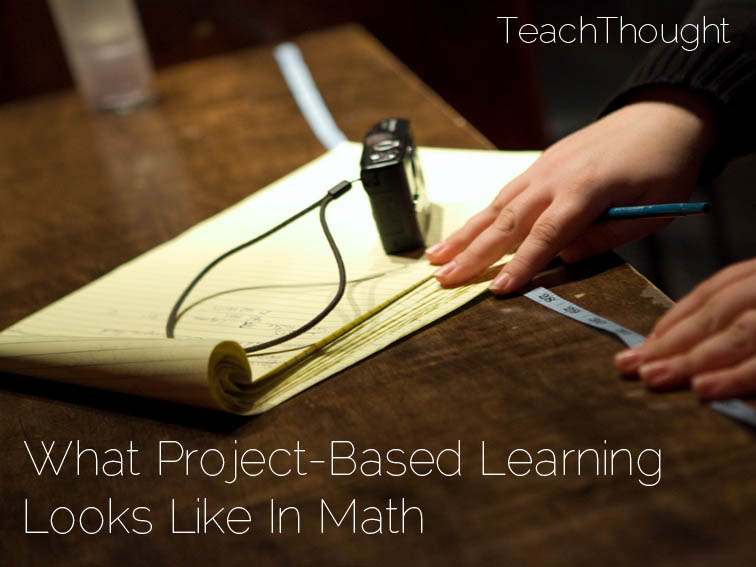What Project-Based Learning Looks Like In Math
contributed by Janet Pinto, Chief Academic Officer at Curriki
I wish geometry was taught in this way when I was in school.
For so many students, it’s difficult to make a real-life connection between math and their everyday lives.
By adopting a Project-Based Learning (PBL) approach, students learn that geometry is not only theoretical but practical and necessary. Students will move beyond a basic understanding of concepts to the enjoyment of discovery.
Thom Markham, Ph.D., President of PBL International, notes that Project-Based Learning points us toward the future of education. “It’s a proven method for integrating the 21st-century skills of communication and teamwork into the delivery of core subjects.”
Available online at the Curriki site, Curriki Geometry is designed to meet the needs of students raised in a global, interactive, digitally-connected world through the use of real-world examples, engaging projects, interactive technologies, videos, and targeted feedback. Developed with funding from AT&T, the Curriki Geometry course is modular, so can be used as the foundation for students’ Geometry 1 curriculum, as a supplementary resource, in an after-school program, or in a homeschool environment.
The course units have been designed with carefully selected Curriki instructional materials, interactive content, videos, and other materials that students can explore and use as they solve the series of challenges in each unit. The course structure is based on the six Common Core High School Geometry topics, organized into six projects.
See also Prompts To Help Students Design Their Own Projects In Project-Based Learning
Project-Based Learning in Math: 6 Examples
1. Selling Geometry
This project introduces students to a brief history of geometry, geometric terms, geometric shapes, and transformation and manipulation of shapes through reflections, tessellations, and dilations. Students will form marketing teams to ‘sell’ geometry by explaining key terms, demonstrating key shapes, and describing the significance of geometry to an audience
2. Designing a Winner
This project allows students to apply the geometric principles of triangles, volume, and coordinates to the mapping and design of a multi-purpose arena in a limited area. The arena must serve as a venue that can be easily converted for use by two sports, plus serves as a concert venue if needed. Students will form design teams to create a map showing how the arena can be converted for the two sports. The map will be accompanied by a hand-built model or a digital design using Google SketchUp or other tools. In the final presentations, the map and design ideas will be presented to the local City Council.
3. What’s Your Angle, Pythagoras?
One real-world task students must learn is the ability to explain what you know to others. The challenge in this project is for older students to find common examples of right-angle geometry and use their geometric knowledge to create a lesson that explains Pythagorean principles to younger students in a way that is engaging, understandable, meaningful, and relevant.
4. TED Talk: House of the Future
The challenge in this project is for students to examine trends in housing, extrapolate that information to predict the future, and use their geometric modeling skills to design a house that supports their predictions. Students will create a floor plan and basic model of a house of the future that reflects four trends and then deliver their design and give evidence of their thinking in the form of a 10-minute presentation about why their house will be necessary and useful in the future. The format for the talk can vary, but it is suggested that the presentation follow the guidelines for a TED-like talk in which presenters give short presentations that focus on the future and innovation
5. The Art of Triangles
This project teaches students the basics of triangles, such as types, congruence, proofs, and similarity, by asking each student to create a poster, drawing, or personal adornment such as a fingernail design, piece of jewelry, or tattoo that uses at least two different triangular shapes. The product must meet the criteria for ‘beautiful’—that is, it must display symmetry or other design elements that make it attractive.
6. How Random is My Life?
This project is designed to have students work through and master basic problems in probability, and then apply that knowledge to authentic issues in which statistics and probability play large roles. The topics should apply to teen interests and concerns. Students will be given the opportunity to research and choose their topic. However, topics may also be assigned by the teacher in one of four areas:
1. Driving and cell phone use
2. Diet and health
3. Professional athletics
4. Costs associated with a college education
After researching the issue, students are expected to explain how probability affects their lives in each of these areas, and to make recommendations to other teens on actions that can improve their chances of making good decisions on each issue
The Common Core Math Practice Standards are woven through each unit, with projects and explorations designed to develop students’ mathematical habits of mind, problem-solving and reasoning skills, and abilities to use mathematical models and technology tools strategically.
Project-Based Learning in Math: 6 Examples; image attribution flickr user vancouverfilmschool
